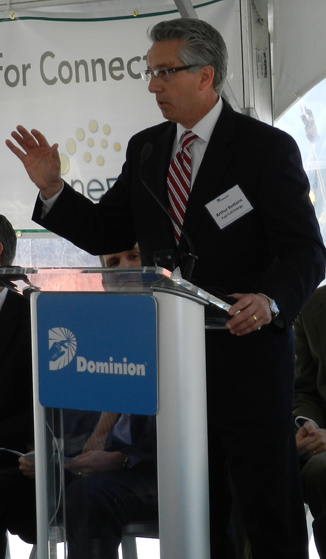The state legislature is on the verge of approving a bill to revise Connecticut”™s renewable energy standards, with supporters saying it would both cut costs and cut down on the state”™s greenhouse gas emissions.

Connecticut”™s Renewable Portfolio Standard (RPS) was enacted in 1998. It aimed to spur the development of new renewable power projects through financial incentives for developers and a requirement that utilities purchase a certain percentage of the power they supply from renewable sources.
But for a range of reasons the new projects never materialized, forcing utilities like Connecticut Light & Power (CL&P) and United Illuminating Co. (UI) to purchase power from out-of-state providers in order to avoid penalties that were attached to the RPS for noncompliance.
“The RPS was put on the books about 15 years ago and we believe that it needs restructuring,” said Dennis Schain, communications director for the Connecticut Department of Energy and Environmental Protection (DEEP). “It”™s not working effectively to achieve the goal of bringing more clean power online at a cost that is good for consumers.”
Those concerns led DEEP to commission a study aimed at modernizing the RPS. That report was finalized April 26, while state legislators simultaneously worked on a bill that would incorporate its recommendations.
The bill, An Act Concerning Connecticut”™s Clean Energy Goals, was passed in the state Senate earlier this month and awaits action in the state House of Representatives. It proposes to broaden the definition of “green,” or Class I, resources and to modify the alternative compliance payment facing utilities that don”™t meet their RPS obligations.
Under the current RPS, Class I resources include energy generated by solar panel systems, wind turbines, fuel cells, a hydropower facility with a capacity of 5 megawatts or less, and certain sustainable biomass facilities, among others.
The proposed changes would reduce the amount of biomass-generated energy that could count toward utilities”™ RPS obligations and would allow energy generated by large-scale hydropower facilities to count toward the RPS.
State Sen. Bob Duff, a Norwalk Democrat and chairman of the Senate”™s energy and technology committee, said, “Clearly, we have work to do.”
The current RPS, Duff said, “hasn”™t been a success because of the fact that most of our Class I power comes from out of state … so our ratepayers are basically subsidizing somebody else outside Connecticut.”
In 2010, in-state renewable projects accounted for just 11 percent of Connecticut”™s Class I RPS standard, according to the DEEP report, with the remaining 89 percent coming from out-of-state.
Additionally, in 2010, 76 percent of Connecticut ratepayers”™ investment in Class I resources went to support biomass plants located primarily in Maine and New Hampshire. According to the report, “These plants are among the least ”˜clean”™ Class I resources.”
Schain said the DEEP report “suggests and the bill contains language that would clamp down on the biomass and landfill gas projects and help move our money into newer projects and hopefully more cutting-edge technology.”
Added Duff: “Some of what we”™re paying for now is really an embarrassment.”
The bill also contains a provision that has pacified the state”™s utilities. The current RPS stipulates that a certain percentage of the electricity circulated by utilities must come from Class I sources, and that percentage increases every year. For 2013, 10 percent of the power provided by utilities must be from renewable sources; by 2020, the minimum is 20 percent.
Under current law, alternative compliance payments facing utilities that fail to meet the minimum are required to go to the Connecticut Clean Energy Finance and Investment Authority (CEFIA) to develop new Class I resources. The bill would instead require that any revenues from alternative compliance payments go toward reducing electric rates.
Representatives from both CL&P and UI said their employers supported passage of the new legislation.
“Our whole effort has been geared toward increasing the use of clean energy but driving down the price of it and moving toward what we call grid parity, so the price of clean energy is the same ”” or lower ”” than you get from conventional sources,” Schain said.





















Comments 1